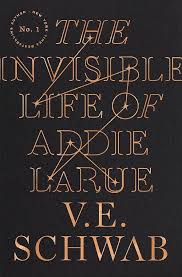Chapter IX
byChapter IX begins in the heart of London, England, on March 26, 1827, where Addie LaRue finds herself surrounded by the timeless beauty of the National Gallery. Inside this sanctuary of art, she feels a deep connection with six specific pieces, each one resonating with her in ways that mirror her own existence. These paintings and sculptures seem to capture fragments of her being, reflecting her inner world back to her in a visual symphony. Despite the profound connection she feels with the art, Addie remains a spectral figure, unnoticed and invisible, yet somehow an indelible part of the very art she admires. It is a cruel irony that while the art lives on, she, the observer, is lost in the shadows, unable to leave any lasting impression on the world around her.
As the gallery prepares to close, Addie lingers before a particularly poignant portrait, lost in contemplation. The quiet hum of the space, filled with whispers of marble and the silent weight of the paintings, is interrupted by the sudden and unwelcome appearance of Luc. His presence, always unsettling, pierces the peaceful solitude she has come to cherish, and their interaction quickly escalates into a confrontation laden with tension and harsh truths. Luc, ever the tormentor, mocks Addie’s perceived insignificance, reminding her of the curse that leaves her forever forgotten by everyone she meets. Yet, despite his cruel words, Addie resists, refusing to let him have control over her, even as her connection to the art that surrounds her becomes a symbol of her defiance. In that moment, the art she admires seems to offer her some solace, a quiet rebellion against the endless erasure that Luc insists upon.
The conversation takes a dark turn as Luc, always unpredictable, transports Addie into the final moments of Ludwig van Beethoven’s life. The scene is stark, set within the intimate despair of Beethoven’s chamber, where the composer, aware of his approaching death, pleads for more time, for a chance to finish his life’s work. Luc, however, shows no mercy, and with his cold and calculated precision, he claims Beethoven’s soul, extinguishing the life force of a musical genius in a single, unforgiving moment. The event exposes the raw power that Luc wields—his ability to manipulate the threads of time, to extinguish brilliance without remorse, and to impose his will upon even the greatest minds of history. The spectacle is a chilling reminder of the vast, incomprehensible forces that Luc controls, forces that threaten not only Addie’s existence but also the very essence of what it means to leave a lasting mark on the world.
Addie, witnessing this moment of darkness and despair, is forced to confront the full extent of Luc’s power. His monstrous form, cloaked in shadow and cruelty, is a force beyond understanding, yet as he recedes, he reveals the familiar face she knows all too well. This fleeting moment of vulnerability, when his true form briefly fades, forces Addie to grapple with a mixture of fear, fascination, and reluctant admiration. The tension between them, the dark dance of defiance and control, remains as strong as ever, leaving Addie in a state of constant conflict. Luc’s final words echo in her mind, taunting her as she falls deeper into the abyss of her eternal struggle. It is a poignant reminder of the price she pays for immortality, for the constant dance with oblivion that she must endure, perpetually intertwined with Luc and the curse he has placed upon her. The chapter serves as a powerful meditation on the fleeting nature of human life, the struggle for recognition, and the dark, eternal fight against the forces that seek to erase all traces of one’s existence. Addie’s journey, marked by her attempts to find meaning and connection, continues to unfold amidst the backdrop of artistic immortality, where the past and present collide, and the yearning for remembrance clashes with the stark reality of oblivion.


